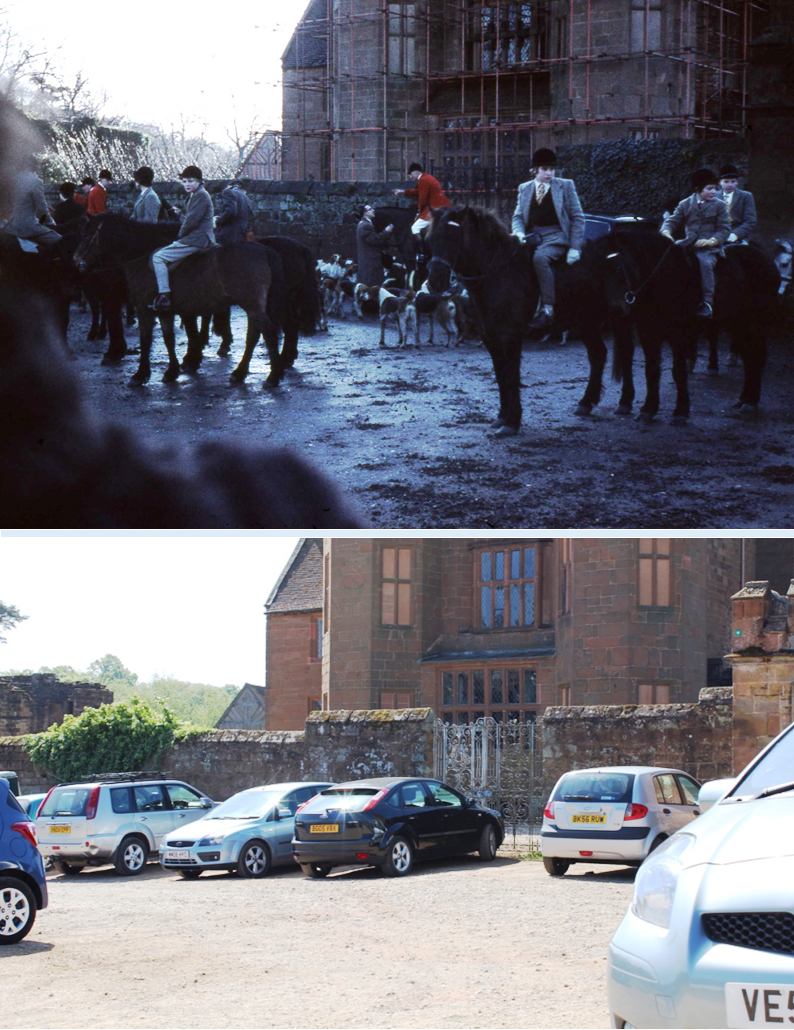
This pair of then & now photos show a once familiar scene when the Warwickshire Hunt gathered for its traditional Boxing Day meeting in the car park of Kenilworth Castle. The hounds are gathered and the horses seem to be mounted by exceptionally youthful riders except for one or two older members, which leads one to assume this wasn’t the main hunt pack.
A brief scan of the Warwickshire Hunt website reveals a history of the Hunt, which it says can trace its history back to “…its formation in 1791 when a Mr Corbet, at his own expense, hunted the country 40 miles long and 20 miles wide”.
Hunts in general, of course, have gone on since time immemorial. In KHAS Newsletter 32 from June 1969, the late Eric Peddlar considered how Kenilworth’s history and geography lent itself perfectly to a long history of hunts and chases: “To begin at the beginning, underlying rocks and the great ice age left this area with a topography and soil for thick forest growth – oakwoods especially. The river valleys which provided convenient access must then, even more than now, have been flooded and marshy for much of the time. An additional attraction to early hunters would be the wealth of wildfowl and game flourishing in this primaeval environment. This physical character should be stressed because, until quite late in its history, Kenilworth’s principal attraction was the quality of its hunting – in some ways the castle was always a rather grand hunting lodge for successive monarchs – from King John to James I. And later, the pool drained, the timber continued to be a valuable source of revenue (Estate accounts of Hyde-Villiers)”.
Since the Hunting Act, 2004 there has been a ban on the hunting of foxes, and officially only the sport of drag-hunting continues. However, prior to the last general election, the prospect of a parliamentary vote on a repeal of this ban was once again in the news.
